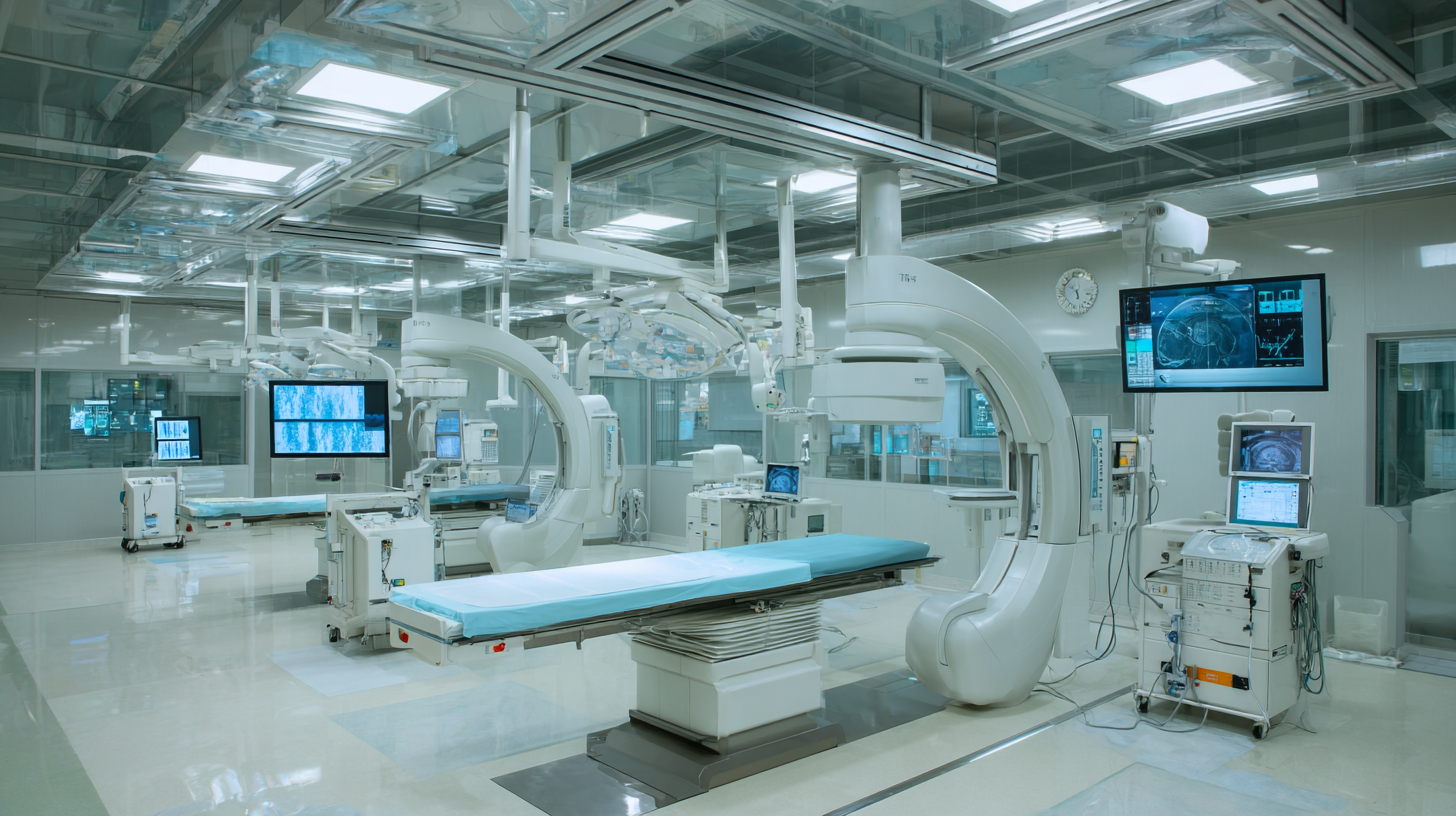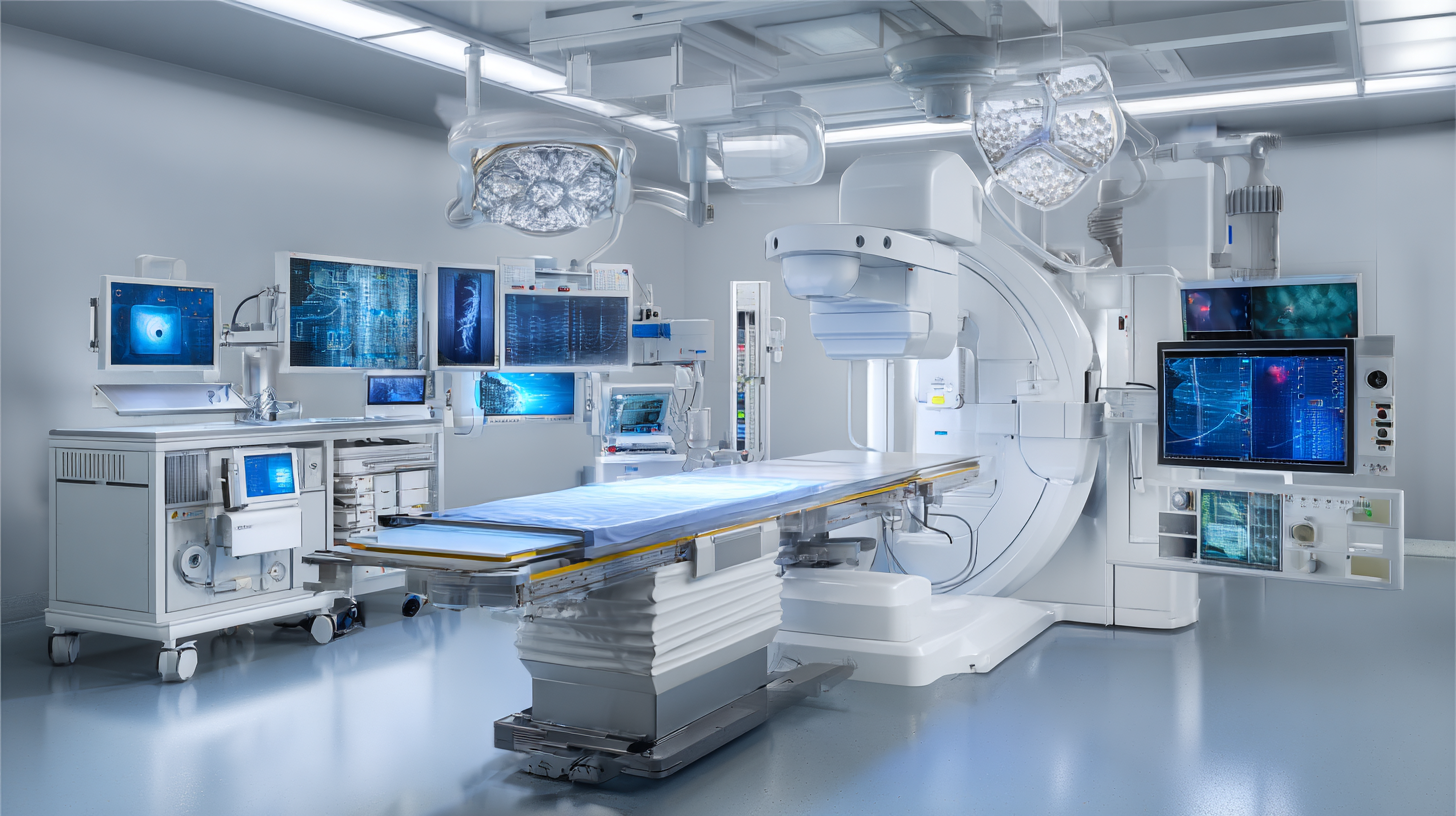Services
A Comprehensive Comparison of Leading Image Intensifier Fluoroscopy Solutions
In the rapidly evolving field of medical imaging, Image Intensifier Fluoroscopy stands out as a crucial technology for real-time visualization during diagnostic and interventional procedures. Reports indicate that the global image intensifier market is projected to reach $2.6 billion by 2025, demonstrating a robust CAGR of 6.5% from 2020 to 2025. This growth is fueled by increasing demand for minimally invasive surgeries and advancements in imaging technology. China has emerged as a key player in this sector, known for its reliable manufacturing practices and consistent product quality. With its state-of-the-art engineering and commitment to excellence, Chinese-made solutions have gained the trust of healthcare professionals around the world.

This blog delves into a comprehensive comparison of the leading Image Intensifier Fluoroscopy solutions, highlighting their technical specifications, performance metrics, and overall impact in the landscape of modern medical imaging.
Understanding Image Intensifier Fluoroscopy: Key Features and Benefits
Image intensifier fluoroscopy has transformed the landscape of diagnostic imaging by enhancing visibility and providing real-time insights during procedures. This technology amplifies low-level x-rays, resulting in high-quality images that can guide interventional procedures and enhance patient outcomes. According to a recent report by MarketsandMarkets, the global market for fluoroscopy systems is projected to reach $2.4 billion by 2026, driven by the rising incidence of chronic diseases and an increasing emphasis on minimally invasive procedures.
Key features of image intensifier fluoroscopy solutions include enhanced image resolution, reduced radiation exposure, and the integration of advanced digital technologies. Modern systems often incorporate flat-panel detectors and sophisticated image processing algorithms that provide clearer images while minimizing dose rates. A study in the Journal of Medical Imaging highlighted that the use of digital fluoroscopy can reduce radiation exposure by up to 60% compared to traditional systems, making it not only more efficient but also safer for both patients and clinicians. The ongoing development in this field continues to highlight the importance of technological advancements in improving diagnostic capabilities and patient safety.
A Comprehensive Comparison of Leading Image Intensifier Fluoroscopy Solutions
This bar chart illustrates a comprehensive comparison of key performance metrics across leading image intensifier fluoroscopy solutions. The metrics measured include resolution in line pairs per millimeter (lp/mm), contrast ratio, image acquisition speed in frames per second (fps), size in centimeters, and weight in kilograms. These metrics are critical for understanding the efficiency and efficacy of various fluoroscopy systems.
Comparing Top Manufacturing Brands: What Sets Them Apart
When it comes to image intensifier fluoroscopy solutions, understanding the unique features of leading manufacturing brands is crucial for healthcare professionals. Each brand offers distinctive technological advancements and innovations that are designed to enhance imaging quality and user experience.
For instance, Company A is renowned for its state-of-the-art digital processing algorithms that significantly improve image clarity and reduce radiation exposure, making it a favorite among radiologists seeking precision and safety.
In contrast, Company B prioritizes user-friendly interfaces and modular designs, allowing for easier integration into existing medical workflows and enhancing accessibility for clinicians.
Another key differentiation lies in the durability and maintenance of the equipment. Company C focuses on robust construction and offers extensive service packages, ensuring that their systems remain operational with minimal downtime. Their commitment to long-term reliability appeals to institutions with high-volume patient turnover.
On the other hand, Company D emphasizes compact design innovations that are ideal for smaller surgical suites, maximizing space without compromising performance.
This blend of advanced technology and tailored solutions is what sets these brands apart in the competitive landscape of image intensifier fluoroscopy.
Quality Assurance in Manufacturing: Ensuring Reliability and Performance
Quality assurance in manufacturing plays a pivotal role in ensuring the reliability and performance of products in various industries, including medical imaging technologies like image intensifier fluoroscopy solutions. Recent studies highlight the significant impact of quality management practices on overall performance, demonstrating that organizations implementing robust quality frameworks consistently outperform their counterparts. For instance, a study focusing on the Indian manufacturing sector found that the adoption of comprehensive quality management practices led to a marked improvement in product quality outcomes, showcasing the importance of structured approaches to quality assurance.
Moreover, advancements in production process management have shown to enhance quality control, particularly noted in sectors such as iron and steel manufacturing in Libya. Research indicates that effective management of production processes directly correlates with improved quality and reliability of the final products. As companies face intense competition, ensuring seamless integration of quality management tools into their operational strategies becomes essential. With real-time monitoring systems gaining traction within the manufacturing landscape, firms are increasingly capable of optimizing operations, resulting in heightened product quality and enhanced performance metrics across the board. This data-driven approach is transforming how quality assurance is perceived and practiced, underscoring its criticality in achieving sustainable competitive advantage.
Evaluating Technological Innovations in Fluoroscopy Solutions
Fluoroscopy has evolved significantly over the years, with technological innovations redefining the landscape of medical imaging. The latest image intensifier solutions offer enhanced sensitivity and resolution, enabling clinicians to visualize dynamic processes in real-time with unprecedented clarity. Innovations such as digital flat-panel detectors and advanced image processing algorithms have markedly improved the quality of fluoroscopic images, resulting in more accurate diagnoses and improved patient outcomes. These advancements also enhance the ability to conduct procedures with reduced radiation exposure, benefiting both patients and healthcare providers.
Furthermore, the integration of artificial intelligence and machine learning in fluoroscopy solutions is paving the way for groundbreaking improvements in the field. These technologies facilitate automated image enhancement, enabling radiologists to detect anomalies more swiftly and reliably. Additionally, user-friendly interfaces and customizable settings in modern systems allow for greater flexibility during procedures, catering to the specific needs of various clinical environments. As these technological innovations continue to evolve, the future of fluoroscopy looks promising, poised to deliver even greater efficiencies and capabilities in patient care.

Choosing the Right Manufacturer: Essential Factors to Consider
When selecting an image intensifier fluoroscopy solution, manufacturers must be evaluated on several critical factors. First and foremost, image quality remains paramount. According to a recent report by MarketsandMarkets, the global fluoroscopy systems market is expected to grow from $1.9 billion in 2021 to $2.5 billion by 2026, highlighting the increasing relevance of high-resolution imaging for accurate diagnostics. Factors such as spatial resolution and contrast sensitivity play vital roles in determining overall performance, impacting clinical outcomes.

Another essential consideration is the manufacturer's reputation and service support. The same MarketsandMarkets report emphasizes that providers with extensive experience and robust after-sales support often outperform their competitors in customer satisfaction. Reliability in equipment performance and the availability of prompt technical assistance can significantly reduce downtime, enhancing workflow efficiency in busy clinical settings. Furthermore, understanding the innovative features offered by different manufacturers, including advanced dose management systems, can provide an advantage in optimizing patient safety while maintaining diagnostic quality.
